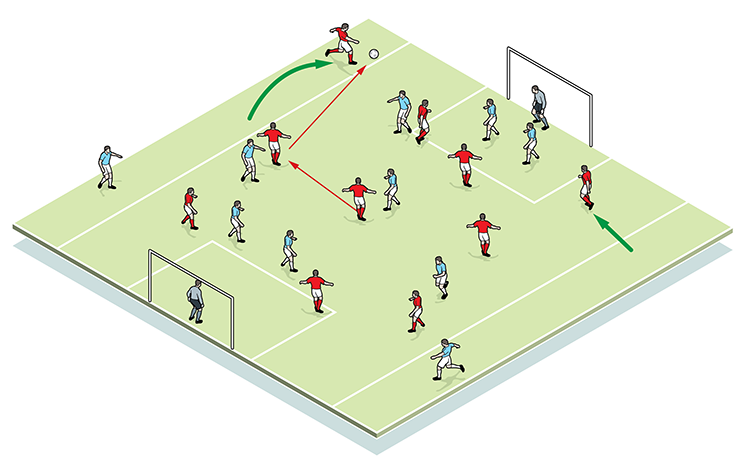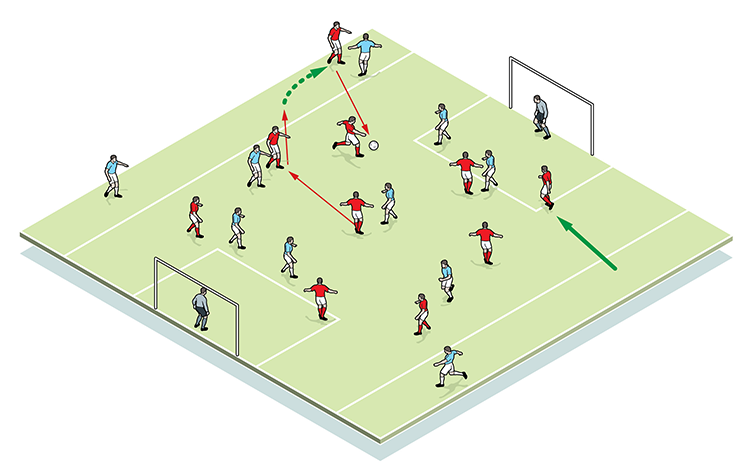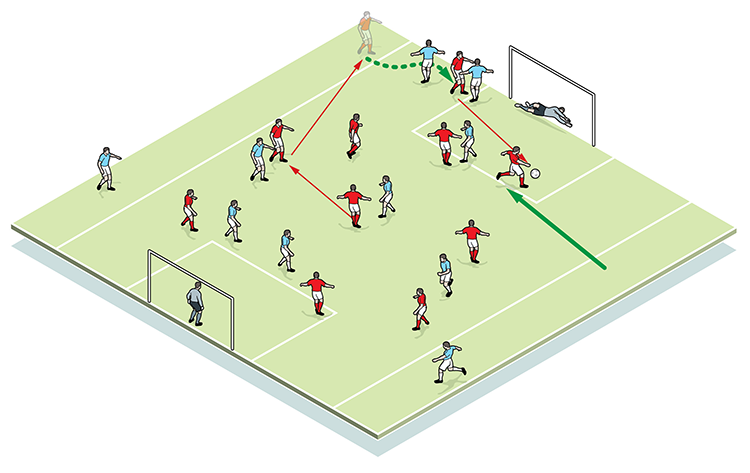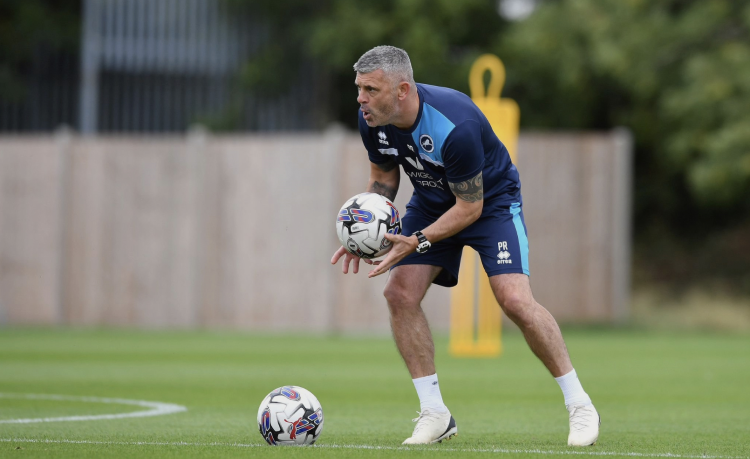You are viewing 1 of your 1 free articles
Pure wing play
Pure wing play is about developing wingers’ ability to cross the ball, whilst promoting relationships and understanding with strikers and other attack-minded team mates.
| Area | 60x45 yards |
| Equipment | Balls, goals |
| No. of Players | 16, plus 2 keepers |
Pure wing play is about developing wingers’ ability to cross the ball, whilst promoting relationships and understanding with strikers and other attack-minded team mates.
Forwards should begin to understand where a ball will be delivered to just from the winger’s body shape and how he is positioned.
It’s important to practise this because in today’s game so many opportunities are created from wide areas. Using the full width of the pitch allows wingers to create more space for the attacking team, and we see rehearsed wing moves paying off frequently in matches.
We’ll practise this session for around an hour.
What do I get the players to do?
Having placed a goal at each end of the playing area, along with two wing channels five yards wide, we first practise unopposed crossing routines. We use five players – a winger on each side, two strikers and a supporting midfielder. The ball is played out to either flank where the winger either dribbles and crosses, takes a touch then crosses, or crosses first time. The key is for the winger to send balls in using a variety of crosses... lofted balls, drilled centres or clever cutbacks.
In addition, if the ball is crossed from the right, the left winger attacks the far post looking to score, and vice versa.

How do I put this into a game situation?
On the same playing area, we create an 8v8 small-sided game. Both teams have a winger in each channel leaving 6v6 in the middle. Play is always encouraged out towards the flanks, where wingers can be asked to follow a number of different progressions and rules.
Rule 1
The wide player has unlimited touches, so he can dribble the ball along the flanks and then cross.

Rule 2
The winger only has one touch so is required to cross the ball from wherever he receives it.

Rule 3
Limit the wide player to two touches so attackers know when the ball is coming in.
Rule 4
The winger must run on to a pass into his channel though only has one touch, therefore much of the emphasis here is on the set-up pass from a central player.

Rule 5
An opposition player is allowed access to the channel to attempt to win the ball. Under pressure, the winger must act quickly and decisively

Rule 6
The winger can enter the main playing area, looking to shoot or cut the ball back for an inrushing team mate

What are the key things to look for technically/tactically?
Obviously, the type of cross is crucial in this move, so we look for variation and imagination in the balls that are played in.
We also expect quick decision-making on the wings, because the earlier a ball comes in, the better the scoring opportunity.
Related Files
Editor's Picks
Deep runs in the final third
Using the goalkeeper in build-up play
Pressing principles
Intensive boxes drill with goals
Penetrating the final third
Creating and finishing
My philosophy
Pressing initiation
Compact team movement
Coaches' Testimonials

Alan Pardew

Arsène Wenger

Brendan Rodgers

Carlos Carvalhal

José Mourinho

Jürgen Klopp

Pep Guardiola

Roy Hodgson

Sir Alex Ferguson

Steven Gerrard
Coaches' Testimonials

Gerald Kearney, Downtown Las Vegas Soccer Club

Paul Butler, Florida, USA

Rick Shields, Springboro, USA

Tony Green, Pierrefonds Titans, Quebec, Canada
Join the world's leading coaches and managers and discover for yourself one of the best kept secrets in coaching. No other training tool on the planet is written or read by the calibre of names you’ll find in Elite Soccer.
In a recent survey 92% of subscribers said Elite Soccer makes them more confident, 89% said it makes them a more effective coach and 91% said it makes them more inspired.
Get Monthly Inspiration
All the latest techniques and approaches
Since 2010 Elite Soccer has given subscribers exclusive insight into the training ground practices of the world’s best coaches. Published in partnership with the League Managers Association we have unparalleled access to the leading lights in the English leagues, as well as a host of international managers.
Elite Soccer exclusively features sessions written by the coaches themselves. There are no observed sessions and no sessions “in the style of”, just first-hand advice delivered direct to you from the coach.









